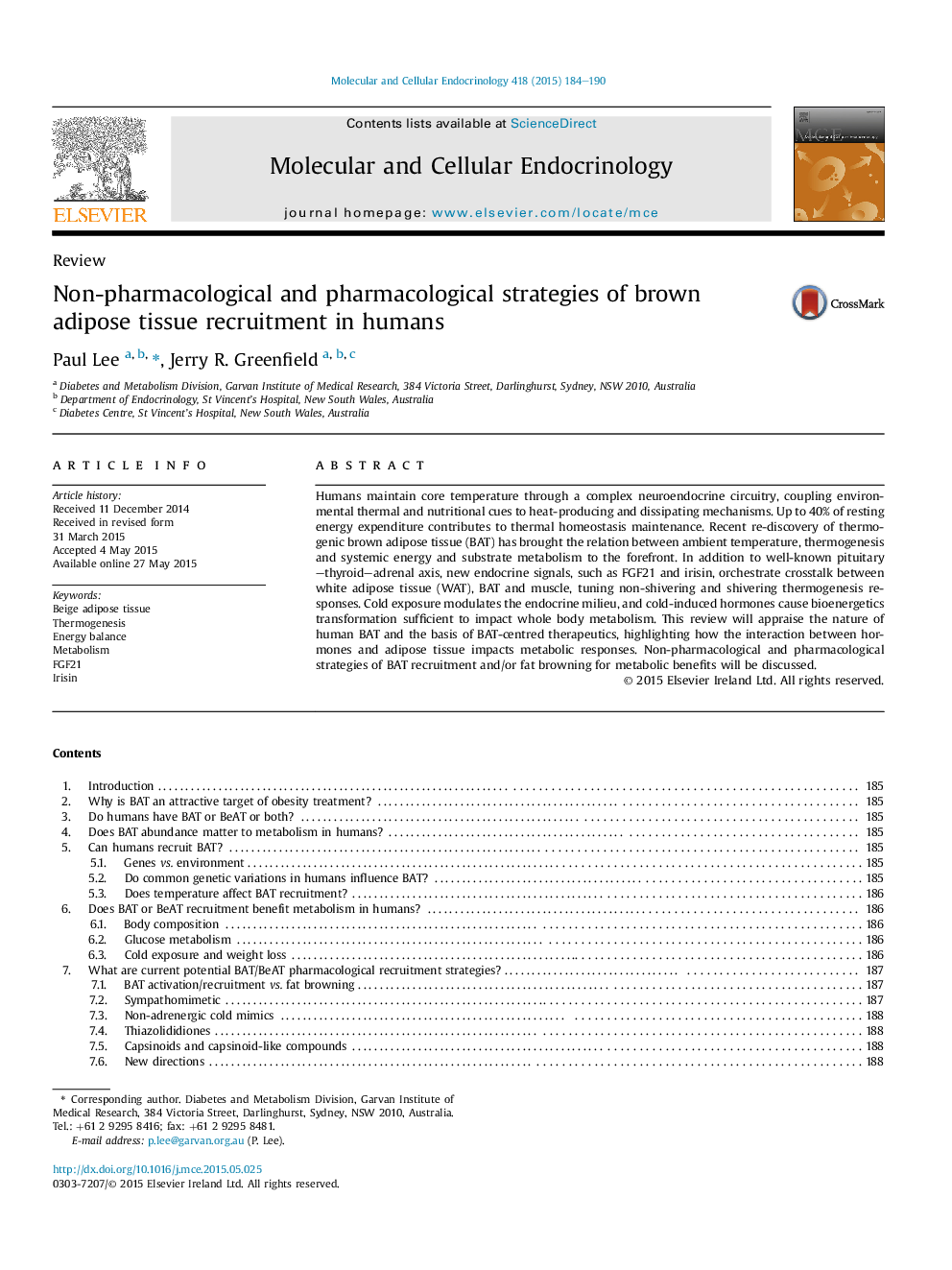| کد مقاله | کد نشریه | سال انتشار | مقاله انگلیسی | نسخه تمام متن |
|---|---|---|---|---|
| 2195648 | 1098743 | 2015 | 7 صفحه PDF | دانلود رایگان |
• Brown (BAT) and beige adipose tissue (BeAT) are present in adult humans.
• High BAT/BeAT states are associated with leanness and lower glycaemia.
• Acute cold exposure activates, while cold-acclimation recruits BAT in humans.
• Novel therapeutics are showing promise as BAT/BeAT activating/recruiting agents in humans.
Humans maintain core temperature through a complex neuroendocrine circuitry, coupling environmental thermal and nutritional cues to heat-producing and dissipating mechanisms. Up to 40% of resting energy expenditure contributes to thermal homeostasis maintenance. Recent re-discovery of thermogenic brown adipose tissue (BAT) has brought the relation between ambient temperature, thermogenesis and systemic energy and substrate metabolism to the forefront. In addition to well-known pituitary–thyroid–adrenal axis, new endocrine signals, such as FGF21 and irisin, orchestrate crosstalk between white adipose tissue (WAT), BAT and muscle, tuning non-shivering and shivering thermogenesis responses. Cold exposure modulates the endocrine milieu, and cold-induced hormones cause bioenergetics transformation sufficient to impact whole body metabolism. This review will appraise the nature of human BAT and the basis of BAT-centred therapeutics, highlighting how the interaction between hormones and adipose tissue impacts metabolic responses. Non-pharmacological and pharmacological strategies of BAT recruitment and/or fat browning for metabolic benefits will be discussed.
Journal: Molecular and Cellular Endocrinology - Volume 418, Part 2, 15 December 2015, Pages 184–190
